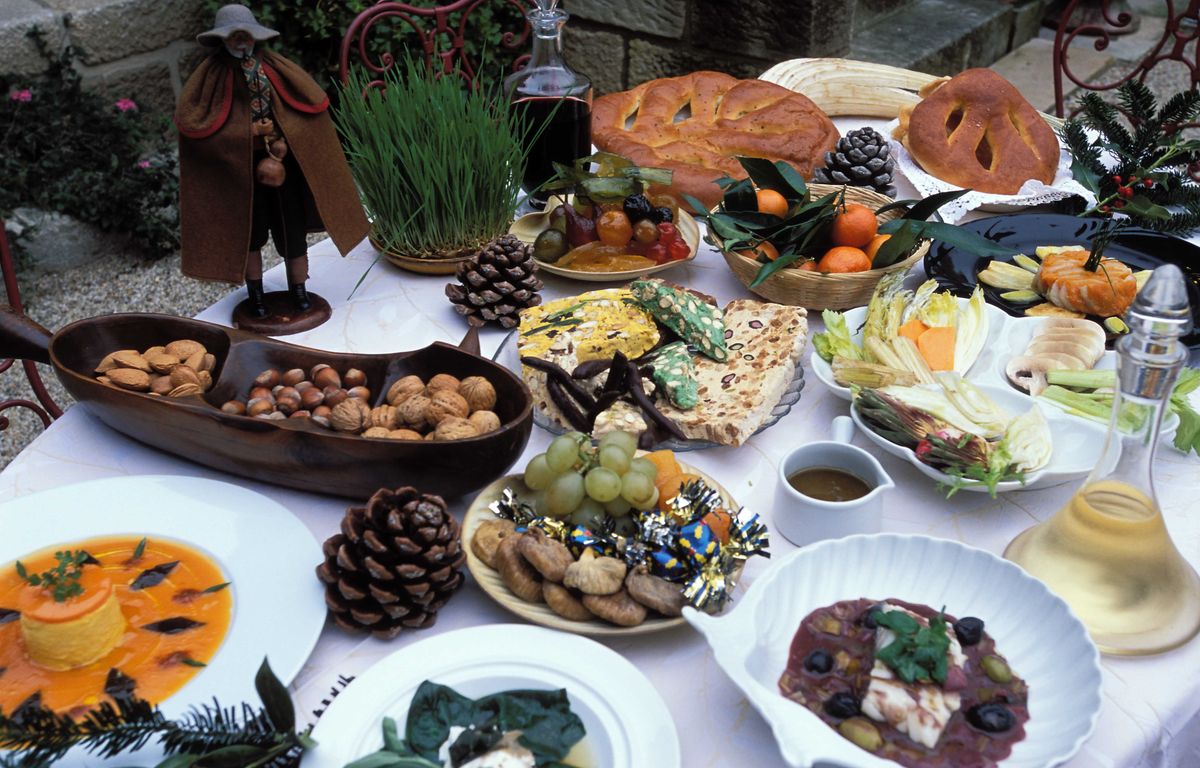
The French love food, that’s no news. Actually everyone likes it, but maybe we’ve just taken the vice a little further. It is therefore not surprising to note that on the occasion of the biggest feast of the year, the French from all regions have worked to develop foods designed for the Christmas holidays. A brief overview of these regional traditions based on butter, pork, chocolate and sugar.
In Alsace, bredele, or Christmas “little breads”
Certainly, “petit pain” in Alsace also applies to pains au chocolat (or chocolatines, we’re not making a fuss here, it’s almost Christmas). But the bredele are made differently. Sugar (a lot), butter (a lot), flour and eggs for the dough which is then cut with the help of a mold to give the future cookies the shape of Christmas trees or little men. A small hole at the top to pass a string through and hang them on the tree, and that’s it. So here you are with a stash of cakes hanging from the branches and ready to be eaten. A tradition that dates back at least to the 14th century, time to which the oldest molds found date back by archaeologists, explains a site dedicated exclusively to bredele.
In Provence, 13 desserts for an evening
The Mediterranean diet is known to be good for your health. An assertion which is verified by the statement of the composition of the 13 Provençal desserts, traditionally served on Christmas Eve. See instead: dried fruits, fougasse with olive oil and without butter (the oil pump), nougat, dates, quince paste and candied fruits. Depending on the household, the composition of the 13 desserts varies but is always based on the foods mentioned.
In theory, this tradition is inherited from Christianity where the 13 desserts represent the Last Supper, the last meal of Jesus accompanied by his 12 apostles. Thus, each dessert presented has a symbolic function: the dried fruits represent the four mendicant religious orders, the white and black nougats for the two penitent orders, the dates symbolize the Orient, the region where Jesus was born, details the Department of Bouches-du-Rhône.
In the West Indies, the pig is the king of the party
“Every pig has its Christmas to die (Chak kochon ni nwèl a-yo)”, says the Creole proverb. In blood sausage, ham, caramelized with pineapple or accompanied by a dog sauce, in the French West Indian region (Guadeloupe, Martinique), pig is indeed the king of Christmas tables. Traditionally, the pig served on Christmas Eve had been fattened all year round, particularly with local fruits such as bananas or guavas.
We owe the origin of this star food of West Indian tables to the English, who imported smoked hams into their Caribbean colonies every end of the year from their American territories, specifies FranceAntilles.
In the North, shells (but not scallops)
We call it a shell, but it is a brioche, and not a seafood. In the North, shells are a preparation made from sugar, flour and butter in which you can incorporate raisins, chocolate chips or grains of sugar, already explained to 20 minutesIsabelle Duvivier, an editor passionate about regional traditions.
This brioche, distributed to children on the morning of the 25th, takes the symbolic form of a swaddled baby and is supposed to recall Jesus, which earned it the nickname Jesus bread (nothing to do with it, therefore, with Lyonnaise sausage).
In the Rhône, papillotes with sweet words
This is undoubtedly the regional Christmas culinary tradition which has spread the most in France. One more pride to add for Lyon cuisine. Papillotes, these little chocolate treats, are a must-have for the end-of-year celebrations. Generally wrapped in gold or silver paper, they are accompanied by a sweet word or a proverb.
We owe this delicate attention to a pastry chef from the end of the 18th century who, in love with a young woman, undertook to convey his feelings to her through little notes slipped into chocolate wrappers. A concept taken up by his boss, a certain “Sir Papillot”. A story whose veracity is doubtful but remains nonetheless touching.
